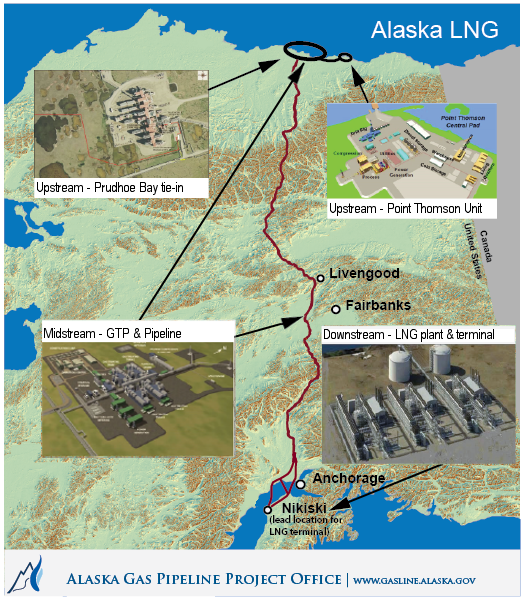State of Alaska Takes The Lead on Alaska LNG Project
The Alaska Gasline Development Corporation, a public corporation of the State of Alaska, is moving to assume leadership of the Alaska LNG project from its private partners, BP, ExxonMobil and ConocoPhillips.
 The three oil majors told the state earlier this year that they would like to slow the development timeline for the $50 billion proposal, which would be the among the largest infrastructure projects ever built in the United States.
The three oil majors told the state earlier this year that they would like to slow the development timeline for the $50 billion proposal, which would be the among the largest infrastructure projects ever built in the United States.
BP, ExxonMobil and ConocoPhillips also left the door open to letting the state take the lead. Alaska's governor has expressed support for this second option, and on Thursday, recently appointed AGDC president Keith Meyer announced that the public corporation would begin transitioning to the lead role in October, with a full takeover by December.
"The parties are working collaboratively to transition the project to state leadership," said Meyer at an AGDC board meeting. "They are also pursuing alternative commercial structure options and concepts that have been used in global LNG projects to reduce the cost of supply."
The new arrangement would give AGDC lead responsibility for finding buyers, securing investors, reaching agreements with gas producers and – once these are in place – conducting the costly front-end engineering and design (FEED) process.
Customers are the critical piece, Meyer says: “At the end of the day we need customer contracts because those customer contracts are what underpin the financing,” he told the board. “The debt parties really don’t want to be engaged until you’ve got some of these other pieces in place."
The advantage for the state in putting AGDC in the lead role is in the financing: the public corporation may be able to find long-term institutional investors who are willing to accept a smaller return than the oil majors, lowering costs, Meyer says.
If all goes to schedule, Meyer's presentation suggested that FEED engineering could begin in 2018 and construction could start as soon as 2019.
